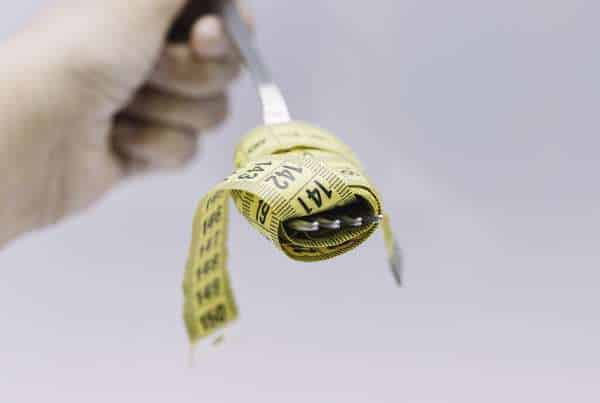Eating disorders refer to several mental health conditions revolving around the bingeing and purging of food, obsessions with weight, highly restrictive diets, and other requirements (including the compulsive ingestion of non-food items, known as pica). While eating disorders can, on the surface, sometimes be masked as a “healthy” concern for bodyweight, they are intensely physically and psychologically destructive and continue to have the highest mortality rate among all psychiatric conditions currently recognized by the Diagnostic and Statistical Manual of Mental Disorders.
Characterizing Eating Disorders in Teens
Eating disorders can have a long list of potential symptoms. While there are five major characterized eating disorders (anorexia nervosa, bulimia nervosa, binge eating disorder, rumination disorder, and pica), there are also several behaviors that can be classified as “other specified feeding or eating disorders” (OSFED), as well as “avoidant/restrictive food intake disorders” (ARFID), which are separate but related to eating disorders.
Anorexia Nervosa
Intense fear of weight gain characterizes anorexia, specific “fear foods,” incredibly low daily caloric intake, low body weight, and severe body image issues, to the point that the patient doesn’t recognize their low body weight as being unhealthy or too low. At its worst, teens with anorexia may have various physical symptoms caused by their malnutrition and low body weight, including:
-
- Loss of menstrual cycle
- Dizziness
- Brittle or thinning bones
- Dangerous heart health issues
- Lanugo-like body hair
- Dental damage due to frequent purges
There is some overlap with obsessive-compulsive disorder (OCD). Teens with anorexia tend to set extreme rules for themselves surrounding food intake and body weight and may punish themselves for breaking these rules (through starvation and excessive exercise).
Bulimia Nervosa
Bulimia is characterized by frequent binge-eating behavior coupled with subsequent purging behavior. It is cyclical, in the sense that teens with bulimia will often obsess over certain foods and be obsessed with eating, binge heartily, then experience extreme guilt, leading to a purge. Purging behavior includes vomiting, taking laxatives, fasting, or excessive exercise.
Teens with bulimia are not usually underweight, but they may still be at risk of malnutrition and other physical ailments because of their frequent binging and purging, including swollen lymph nodes, a weakened immune system, and damage to the throat and teeth caused by stomach acid.
Binge Eating Disorder
Binge eating disorder is characterized by frequent binging and subsequent low mood, but not purging. Teens diagnosed with binge eating disorder will often feel incredibly guilty and self-conscious, reinforcing binging as a coping mechanism, starting a cycle. Unlike teens with anorexia or bulimia, teens with binge eating disorder may be overweight or obese.
Seek Guidance From Parents or Therapists
Eating disorders are severe, and many teens diagnosed with an eating disorder have a warped sense of what is and is not suitable for physical appearance and food. They may be sensitive to specific phrases and sentiments, such as seeing others comment about their health and appearance or seeing them pick up new diets or commit to new kinds of eating.
Start helping your friend by asking their parents or therapist how you can help by learning what sentences and actions to avoid or learning what you should do to model a healthier relationship with food. By better understanding your friend’s diagnosis, you will have an easier time knowing how your behavior and words might affect them emotionally.
Family Support and Care Is Vital
Family and friends can play a significant role in eating disorders in teens through the Maudsley approach. This family-based therapy emphasizes the importance of continuing to provide support outside of inpatient or hospital treatments. The Maudsley approach helps families play a role in the treatment of their teens by coordinating with a therapist providing individual or group therapy and by setting the foundation for healthful living through:
-
- Weight restoration.
- Modeling healthy eating habits.
- Noting and tracking both physical and mental health improvements.
- Slowly helping teens take control over their eating habits as they close in on a healthy weight and have made significant progress.
Family therapy may also play an essential role in helping families better understand their teen’s behavior and problems surrounding food and teaching them how to encourage better eating without placing pressure on the teen themselves and blaming them for their behavior. It emphasizes that the disorder is an external actor playing a role in their teen’s behavior and that the focus is on overcoming that disorder together. Therapists will ensure that parents do not criticize their teen’s behavior or make it “their fault.”
Help and Treatment for Eating Disorders in Teens
It is important not to encourage the behavior associated with your friend’s condition, such as skipping meals, exercising way past the point of physical recovery, avoiding certain foods, or obsessing over body image and thinness. Empathy and compassion are essential, recognizing that a friend’s self-image issues may continue to be a sensitive topic for them even after treatment.
They might not be ready to discuss certain things without triggering anxieties and worries about body image or food. Teens struggling with eating disorders often have a long and arduous treatment process ahead of them, one in which both their physical and mental health must be taken into consideration. Many teens with conditions such as anorexia nervosa are treated at the height of their malnourishment and near starvation.
Despite such consequences, many teens diagnosed with an eating disorder do not realize that they are actively harming themselves and harbor extreme and deep-seated fears regarding certain foods and weight gain. Long-term support from friends and family is essential to the proper treatment of eating disorders in teens. By assisting in the critical refeeding process, modeling healthy eating behaviors, working on beneficial coping mechanisms together, and keeping an eye on potential signs of relapse, a teen’s loved ones continue to play an important role long after the initial treatment process.







